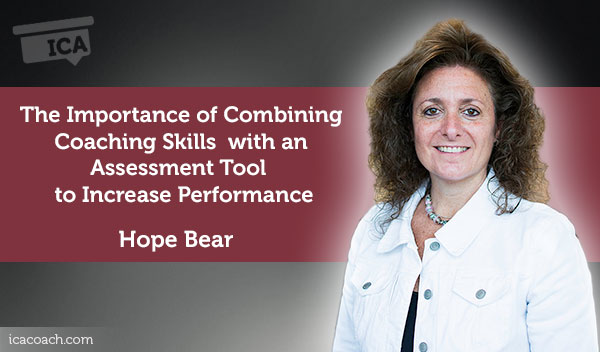
Coaching Case Study By Hope Bear
(Coach, UNITED STATES)
The Predictive Index (PI) was developed in 1955 and can be used for a variety of human resource purposes, including team member selection, executive on-boarding, leadership development, succession planning, performance coaching, team-building and organizational culture change, among others.
The PI measures four primary and fundamental personality constructs:
The behaviors measured by the PI focus on basic leadership competencies and how they can be leveraged by the individual within the organization. The tool is simple, easy to understand and provides a clear language that facilitates a discussion of inclusion and teamwork; rather, than silos and labels. Additionally, the PI has been validated and recognized in the marketplace as a reputable tool. It is EEOC compliant and has been proven that it cannot be influenced by the respondent.
This tool was introduced two years ago and overall, I have seen great results regarding team work, communication and self-awareness. One team that has continued to struggle is the Marketing team. This team is a group of 11 individuals who are independent, assertive and possess strong opinions, as well as a desire to control all situations with their own solutions. In their day to day, they functioned as a group of 11 silos with little respect for each other and were plagued with continuous communication failures. Thus, they either missed critical deadlines or implemented solutions that did not meet the needs of the organization. In both cases, they were ineffective in their individual roles, and as a team, to positively impact the bottom line. As their performance continued to deteriorate, I took the initiative to work closely with them.
Although the PI was a great tool to identify behaviors and motivators, it was far from effective without commitment from the individual team members to work as a team. I realized that without commitment, trust and action, this department would never be an effective team.
Over the past six months I have worked hard to use the Predictive Index in conjunction with my coaching skills to increase individual team members’ awareness around their motivations, needs, and behaviors. Additionally, I have encouraged team members to deepen their knowledge of others, acknowledge “why” others behave in specific ways, and helped to support their commitments and actions.
Once everyone on the team was aware of the factors that drive their specific behaviors, I took the time to share everyone’s motivators and needs with the team. It became evident that there were many similarities as well as differences that were causing conflicts, misperceptions and miscommunications. Instead of acknowledging and accepting their differences and similarities, they chose only to focus on the differences and the problems that arose. By asking the team the following questions, I could start a discussion which deepened their insights, helped them focus on actions and propel forward movement.
There was no doubt that it was much easier for them to highlight the negative situations rather than the positive ones. At the end of the meeting, it became clear that my goal was for them to acknowledge the reasons why they became frustrated with each other, and commit to working through those difficult times to be a high performing team; rather, than moving to into silos.
Two weeks later, I pulled the team together to share their reflections. I asked them to come prepared to share their feedback regarding the following question:
If your success was completely guaranteed, what bold steps might we choose to move forward?
The feedback was amazing. The sentiments within the team had moved from:
Not only were they sharing open and honest feedback but they using identifying their behaviors /motivators as strengths and relying on each other to achieve their goal of a high performing team. They had achieved a level of trust that had not existed previously. In this space, everyone felt safe to express their learnings, share their feedback and be vulnerable without the fear of being judged.
I continued to meet with the team on a weekly basis in addition to scheduled 1-1s with individual team members. During our 1-1s, I could use the insights from their PIs to directly relate my questions to their needs and motivators. This was an effective way for me to individually support each team member and help them along their journey of self awareness. Over a period of several months, team members began to acknowledge their strengths as well as their peers. Only then, when there was a true appreciation and respect for what everyone brought to the table, did their performance improve.
Today, this team is one that openly shares feedback, takes time to reflect on their individual and team successes / failures as well as supports an open and honest environment that is safe, productive and inspiring. The team continuously looks for ways to improve by drawing upon each other’s strengths, evaluating their opportunities and acknowledging each other’s gifts. The outcome has been fantastic. They have met their goals over the past two months and continue to work in a proactive, open and dedicated fashion to achieve all their 2017 goals. There is no doubt in my mind that the PI was a great tool that helped identify specific areas to discuss; but, it was the coaching component that guided and empowered the individual team members to discover, acknowledge and apply their reflections in a positive manner. Because of their success, I have taken this model and applied to other teams with the hopes of achieving similar results. I have no doubt that the time investment will be well worth it.